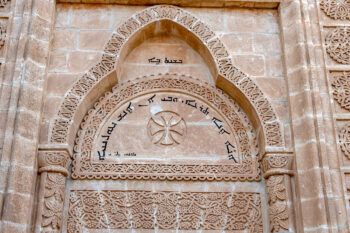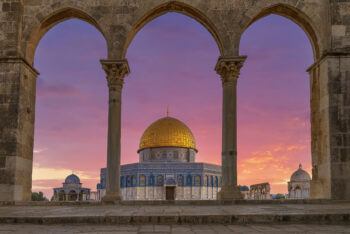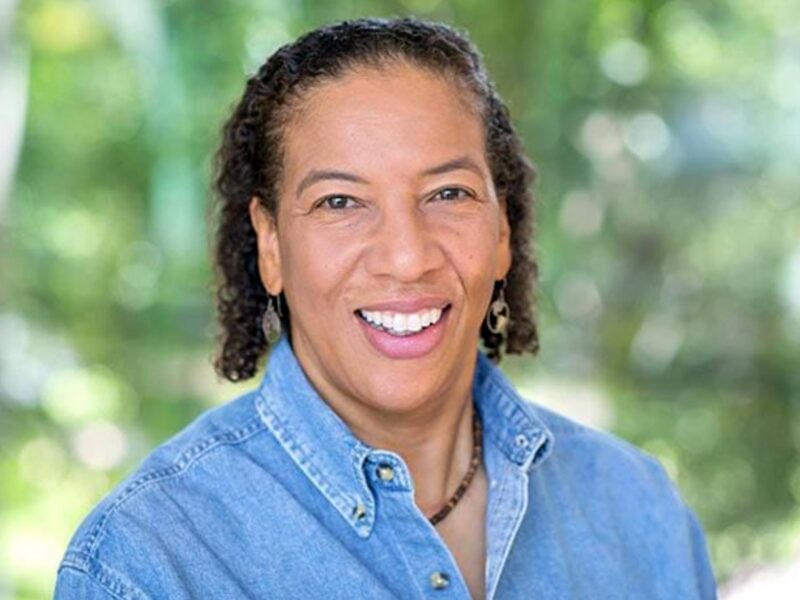Texas A&M-Led Humanities Project Seeks To Preserve An Endangered Language

Texas A&M University historian Dr. Daniel Schwartz has devoted the last decade of his professional life to preserving the past — specifically, the culture of a 2,000-year-old language known as Syriac. He and likeminded colleagues from around the world have been working across place, time and cyberspace to safeguard Syriac cultural heritage, painstakingly creating Syriaca.org, a cyberinfrastructure to link Syriac literature to their persons, places, manuscripts and key concepts.
This spring, they received another big assist from the National Endowment for the Humanities (NEH) — a three-year, $350,000 Humanities Collections and Reference Resources grant to “preserve and provide access to collections essential to scholarship, education and public programming in the humanities.” The grant marks the team’s third from NEH since 2012.
Syriac is a dialect of Aramaic with origins in the first century of the common era that flourished in the Middle East and into Central Asia from the 3rd to 9th centuries before Arabic became the most common language, even in these region’s Christian communities. In fact, Syriac provides the third-largest collection of source material on the ancient Mediterranean World after Greek and Latin. However, UNESCO once deemed Syriac an endangered minority language due to conflict and persecution displacing indigenous Christian populations in the Middle East. Schwartz and the Syriaca.org team account for the language’s uncertain future in its homeland.
Though Syriaca.org is mainly a research project interested in furthering knowledge of the ancient and medieval Middle East, it also “serves the expat communities because there’s sizeable Syriac heritage communities in New Jersey, Sweden and the Netherlands,” said Schwartz, an associate professor in the Department of History within the College of Arts and Sciences. “The numbers of indigenous Christians in the Middle East are dwindling rapidly. … To lose that heritage that’s been in the Middle East for 2,000 years is heartbreaking. There’s a real urgent sense to the work that we do to preserve this cultural heritage to make sure it is not forgotten.”
Methods
The team’s NEH grant will support three deliverables designed to grow Syriaca.org’s functionality and access, according to Schwartz. The first deliverable is a streamlined and graphically oriented user interface to allow people to use the site and its data more easily. The second deliverable is, with assistance from the Center of Digital Humanities Research, to take images and use optical character recognition to render their text into machine-readable text formats, allowing for word searches. The third deliverable is a corpus of Syriac texts in English translation to incorporate hyperlinks and keyword tagging to link texts to other data points within Syriaca.org. This will also facilitate the study and teaching of Syriac in classrooms with English translations side-by-side to original texts.
“The work can be incredibly tedious,” Schwartz said. “What keeps me going is hearing from members of the heritage communities who are tremendously appreciative that somebody is doing this work. People in the heritage communities notice and care that somebody is willing to put this work in — to put up Syriac texts online and their English translation — that these expats that are part of the Syriac heritage community have access to their own cultural heritage.”

Language As A Bridge To History
Some may wonder, why study a language that mainly exists liturgically in the Middle East? Syriaca.org poses its own answer to that question, stating that sources in Syriac “hold immense value for increasing our historical understanding of the Middle East and Asia and are “useful in documenting key moments in the development of Judaism, Christianity, Islam and other religions of Late Antiquity.”
“If you go back a couple of generations of late Roman/early Byzantine historians, Syriac wasn’t very much on the radar screen,” Schwartz said. “Syriac was a latecomer to using digital technology in the study of the field. … And what doesn’t make the jump across the digital divide kind of doesn’t exist to the next generation and the next generation after that.”
Scholars as well as anyone interested can see sources dating back more than 1,500 years, as the project is free and open under Creative Commons licenses. As such, Syriaca.org boasts several entry points into its seemingly vast compendium of knowledge and resources relating to the more than 2,000-year-old language.
One can begin their journey into the Syriac language through a geographical index of relevant places, a biographical dictionary of related persons, a catalog of saints venerated in the Syriac tradition, a handbook of Syriac authors or a database of hagiographic literature. The online portal has been used by researchers to close gaps in their research and by educators to teach students about Middle Eastern civilizations.
“You dig into this material and see a much more nuanced religious landscape to the Middle East,” Schwartz said. “To bring this to students here and help them understand the way religion plays out in the public sphere in America a little bit better by putting it in dialogue with fifth century Syria or in seventh century Byzantium — that’s where I think this is a real value, to better understand the world we live in today.”
The first NEH grant resulted in the development of the Srophé app that converted all initial data into extensible markup language (XML), enabling researchers to encode and link historical data. Because this open-source database uses broad XML guidelines, the Srophé app serves as a publication platform for other digital humanities projects, such as representing data ranging from the architecture of medieval China to the geography of early modern South America. The second NEH grant allowed for Schwartz and the Syriaca.org team to develop data sets and the Srophé app as well as release work data through conceptual entities such as manuscripts, authors, materials and identifying Syriac saints.
Additional Funding And Partners
This past spring, Schwartz also received a $15,000 Texas A&M Arts and Humanities Fellows Program grant to expand Syriaca.org with a module tentatively called The Syriac Taxonomy that will serve as a controlled vocabulary of keyword concepts tailored to Syriac studies.
Partners in the Syriaca.org project in addition to Texas A&M include Vanderbilt University, Princeton University, Marquette University, New York University and the Beth Mardutho Research Library, with affiliations to various institutions. Syriaca.org has received funding support from the Andrew. W. Mellon Foundation, the University of Alabama and the International Balzan Prize Foundation.
Media contact: Shana Hutchins, shutchins@tamu.edu





